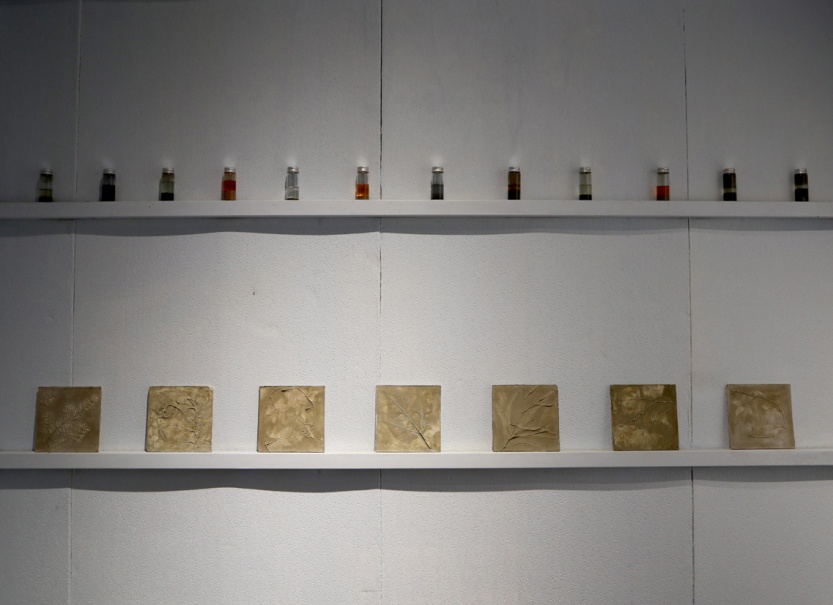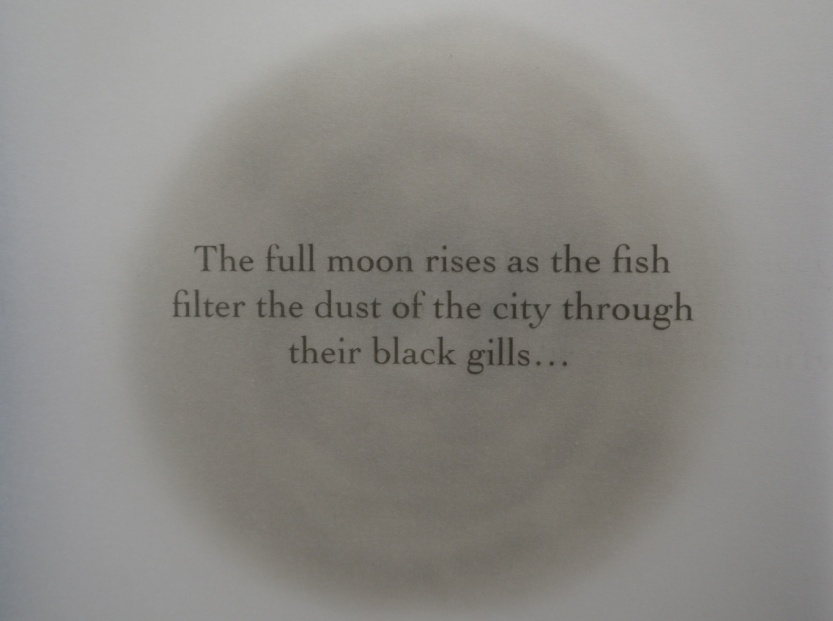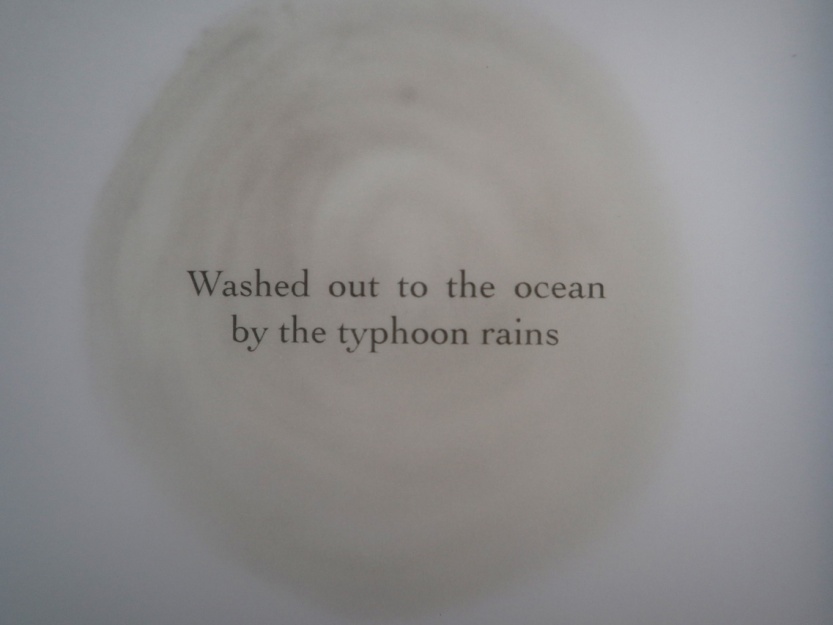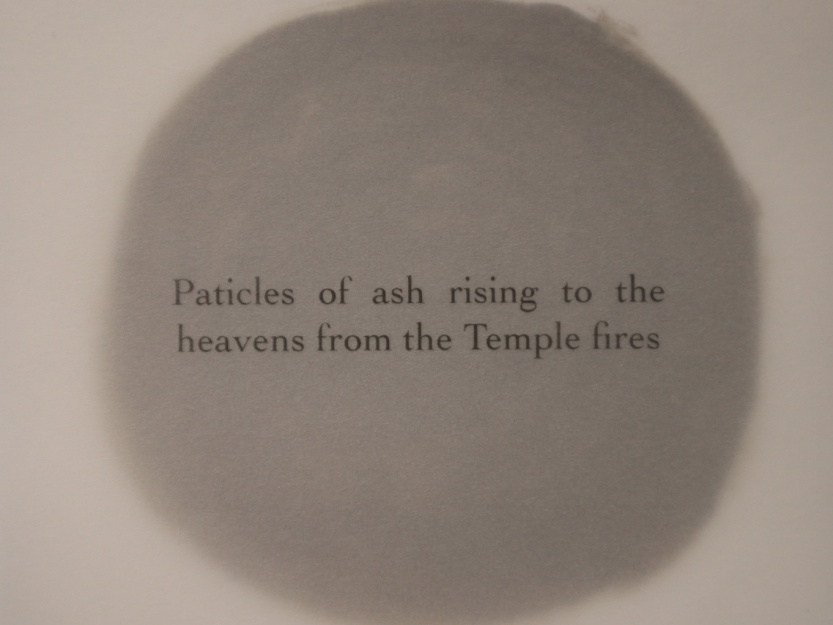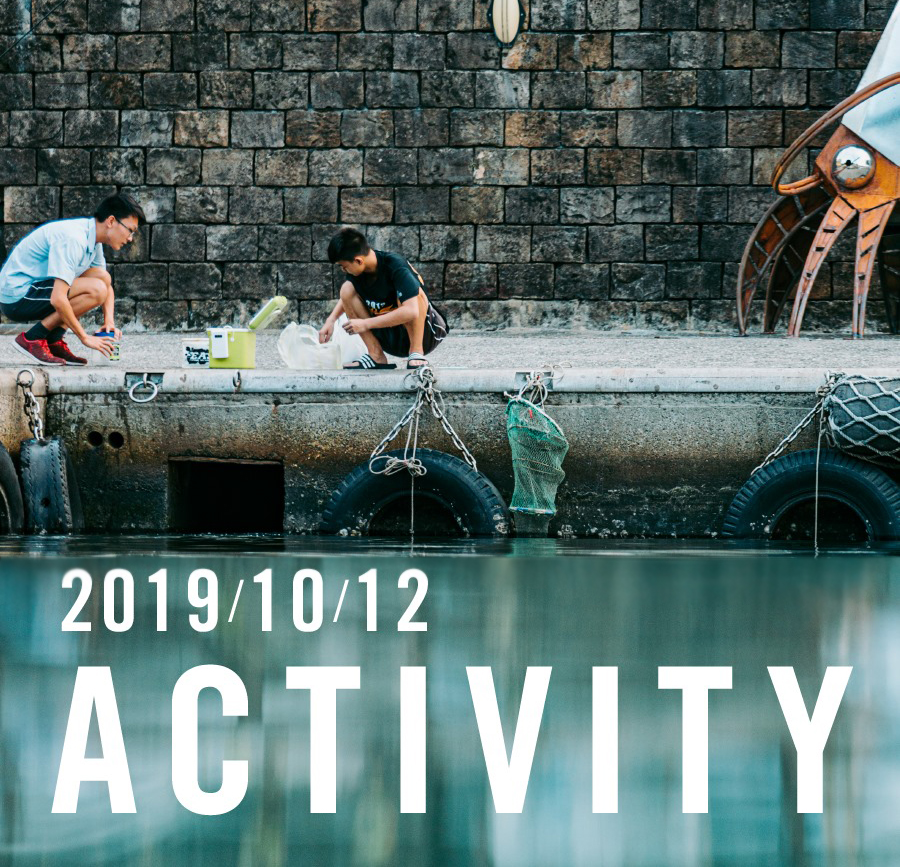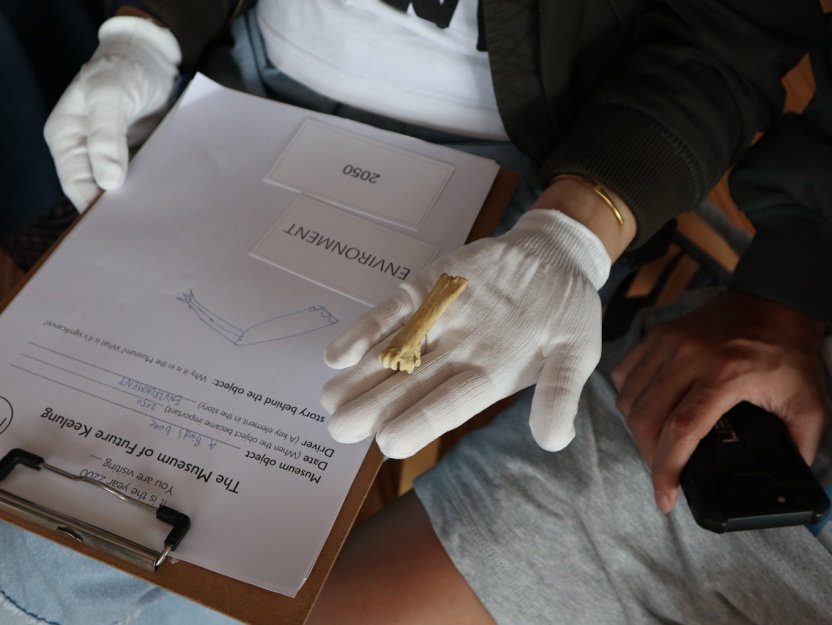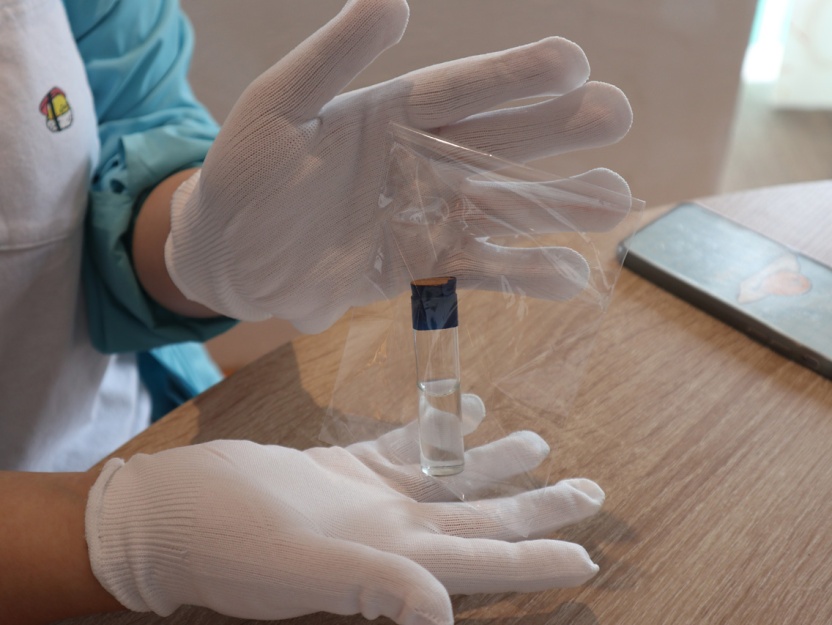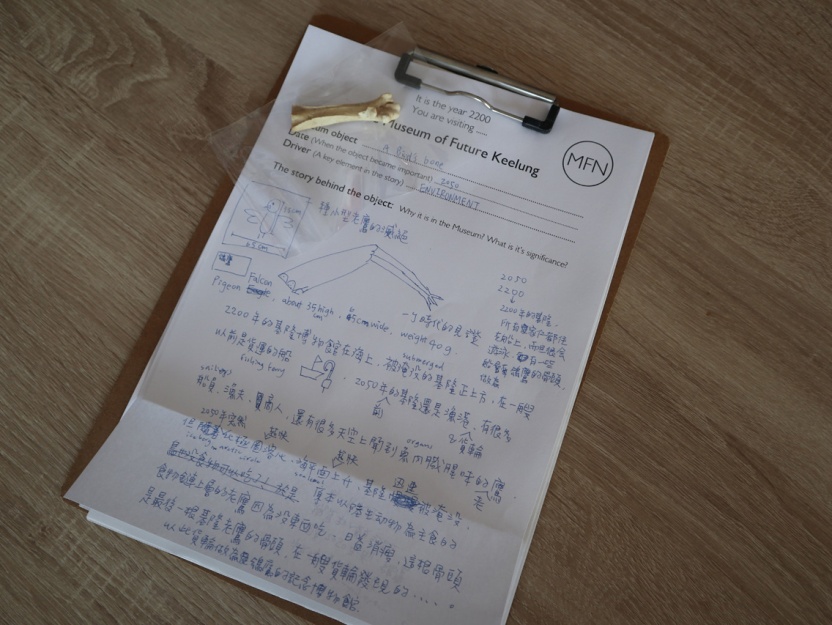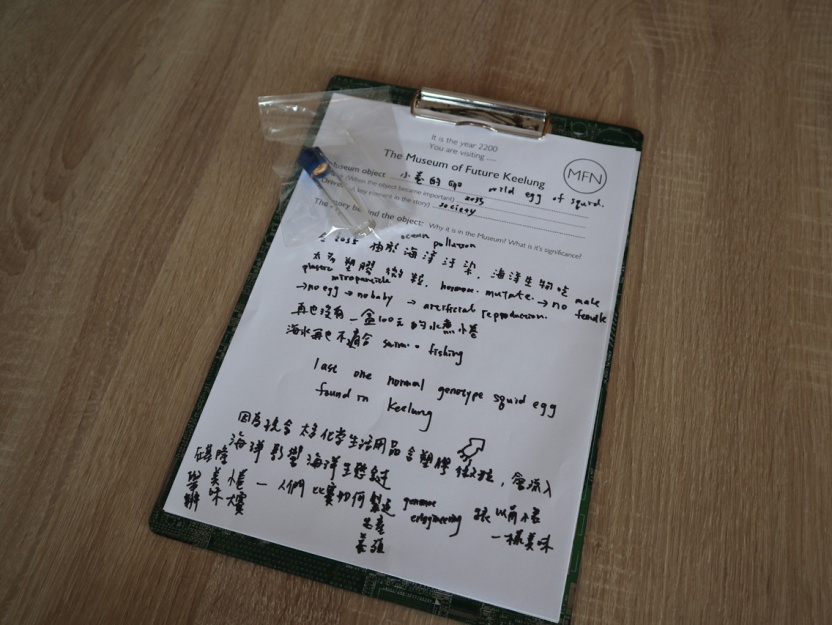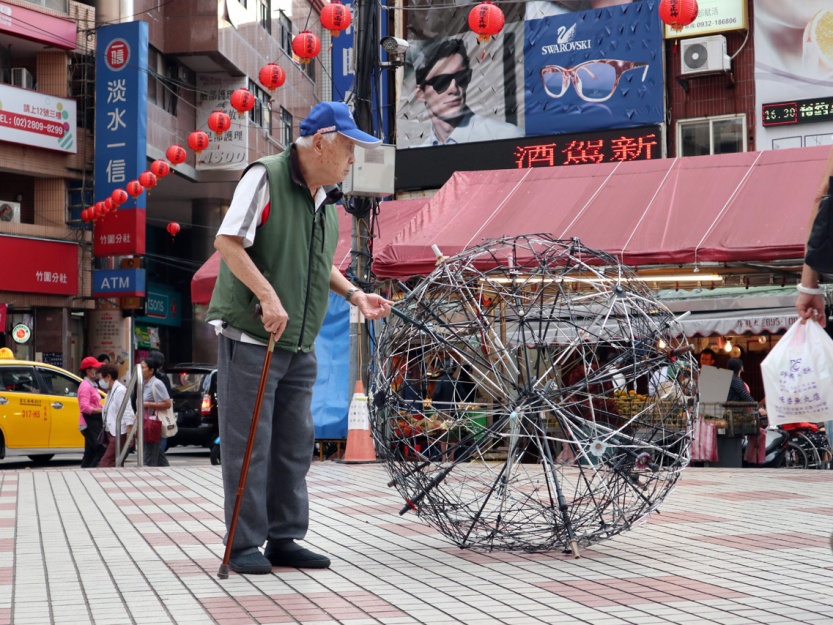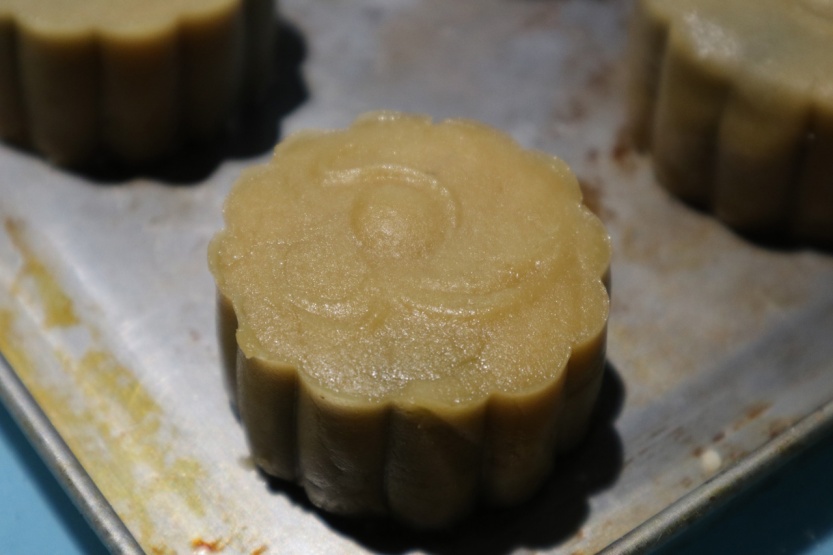Residency Taiwan
1st September – 22 October 2019. Creative Talent Artists in Residence at Bamboo Curtain Studios, Zhuwei, Taipei, Taiwan. http://bambooculture.com/en
‘SILT’
Exploring our relationship with water and the materials that it collects and carries on its journey.
This work focused around an investigation of dust and water, specifically the Plum Tree Creek that runs through Zhuwei (intersecting with a previous work by Wu Mali; Art as Environment – A Cultural Action at Plum Tree Creek. 2011/2012 and with which Bamboo Curtain Studios have a continuing relationship). In the past, people lived in close relationship to the river, using it for drinking, watering crops and washing clothes. Zhuwei become more populated in the 1970’s, large blocks of apartments were built and the river was covered by paths and roads. The water became polluted by discharge from waste pipes from houses and intensive farming effluent and as a result people become disconnected from the water. Even though the creek is less polluted these days, most people do not see it as any way being part of their lives.
Process: We were interested in the particles of material that the creek collects and carries as it passes through Zhuwei and deposits as silt at its mouth where it flows into the Tamsui river. We collected this silt and passed it through a series of improvised filters until we had a fine clay.





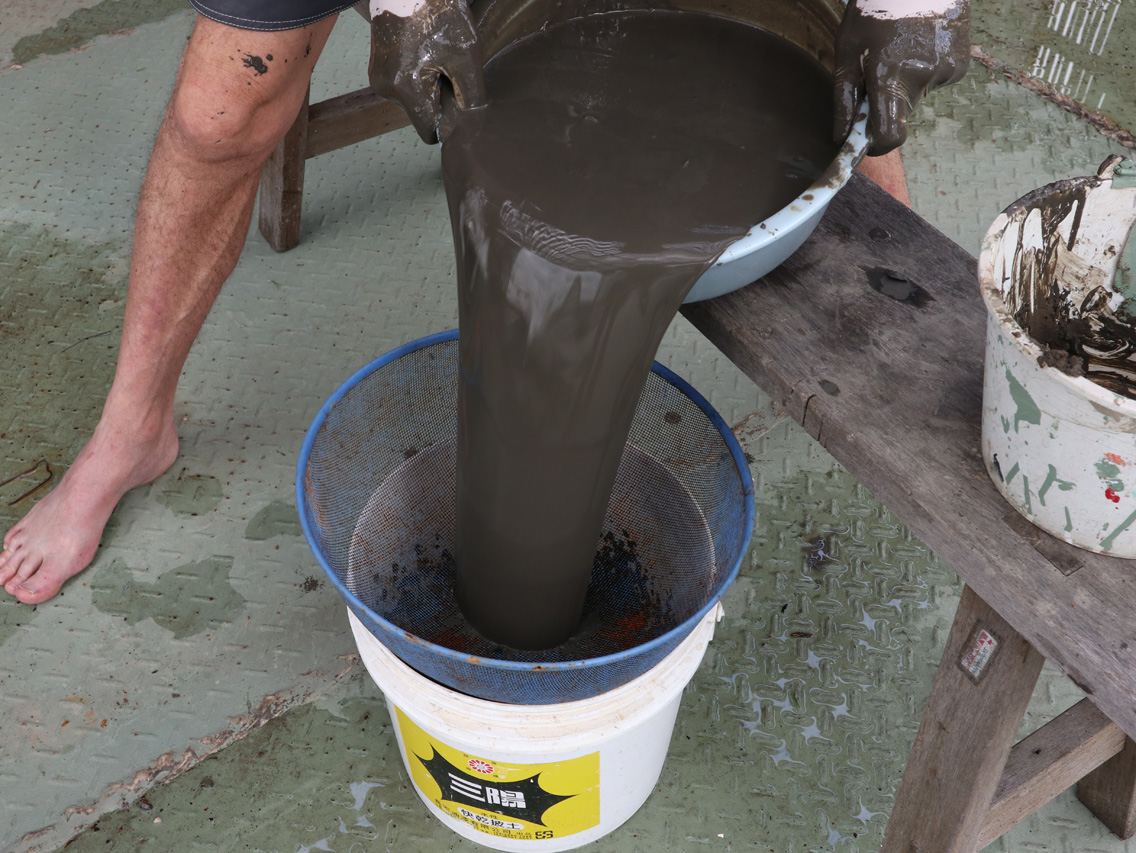
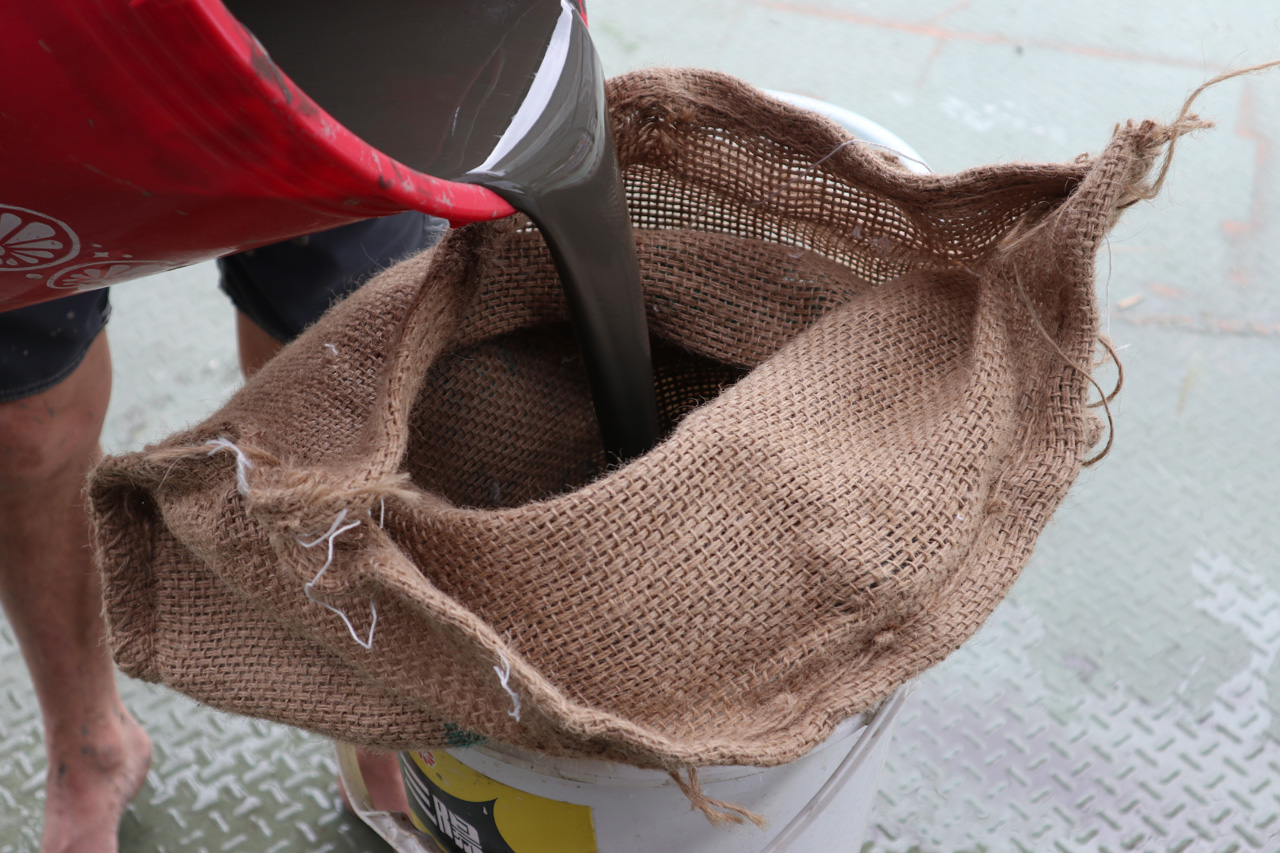





We created a process that used the clay as a material in which to made impressions of botanical samples and then made casts of the impressions to form tiles. We created a mobile ‘SILT Field Laboratory’ and hiked along the creek collecting plants and carrying out public castings at various locations. The tiles captured moments in time and place and we gifted each one to people living and working by the water. These casting sites became places of conversation and exchange, people often returning the following day bringing gifts of fruit and food.
All the materials in this process are in circular movement, being transformed on the journey in different ways, from the city to the creek and back again. This is a collaboration with both place and people; part of a circular flow of new ideas and materials.








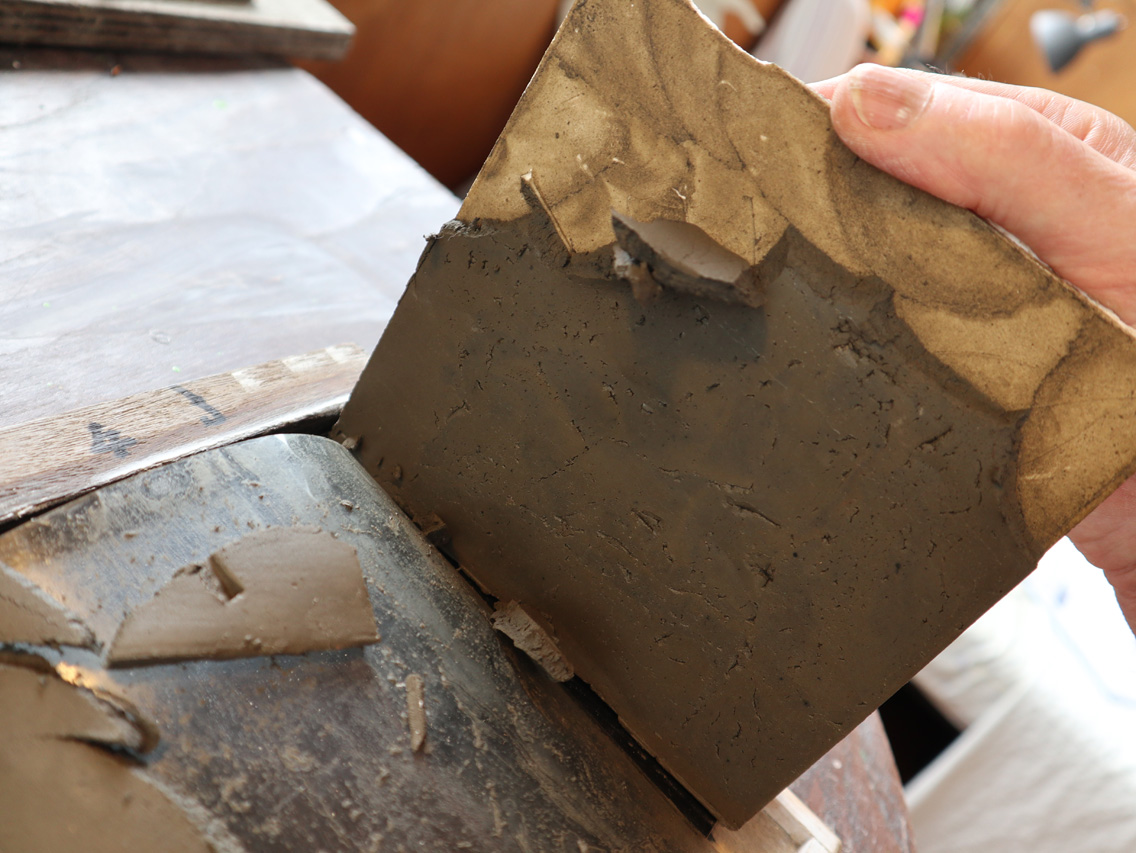






Above: Working at the mouth of the Plum Tree Creek

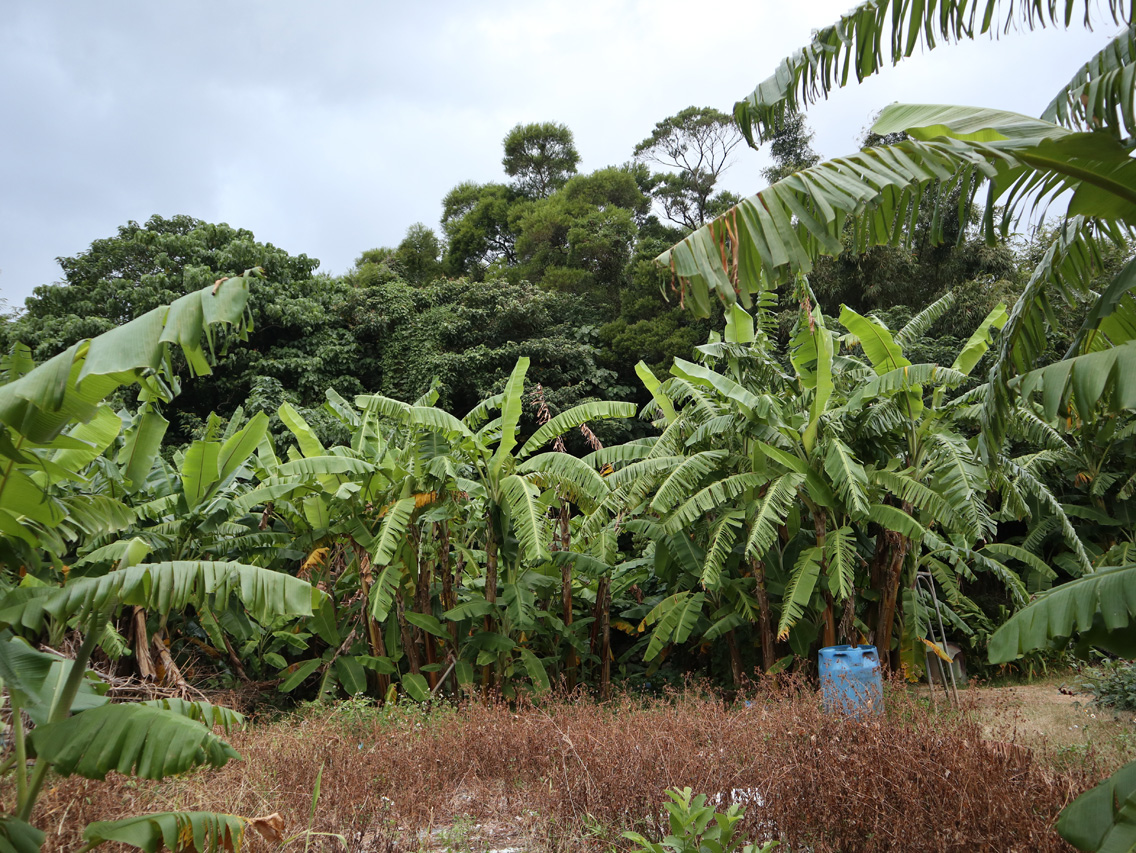







Above: Hiking, casting and gifting along the Plum Tree Creek beyond Zhuwei.
‘It journeys from the mountains
Robbie Coleman & Jo Hodges 2019
Through the valleys and farms, beneath the sleeping city
Gathering and combining fragments of place
Collecting failures and triumphs as it passes
Dreams and imaginings as it flows
Every wedding, every funeral, every aunt, uncle, sister, brother have left their traces
A microscopic record in the dust from the rain lashed streets
Finally arriving at the great river
Where the dust settles to silt
Sedimentary layer on sedimentary layer
An unread library of memories lying within the oceans reach‘
Gather : plants from the banks of the Plum Tree Creek
Cast : using silt from the mouth of the Plum Tree Creek
Gift : to those living and working by the Plum Tree Creek
25th / 26th October 2019
Moon – Water – Dust
Dust is composed of minute particles of human and more than human activity and as such is a carrier of information and stories. The Plum Tree Cree collects dust as it flows from its source through Zhuwei to settle as silt at the Tamsui River. In this work, silt from the mouth of the Plum Tree Creek was collected each day over a month’s lunar cycle and applied to card in varying degrees of dilution. Text exploring different elements of dust was applied over the silt. The text explores both the nature of dust and the stories it carries. Some of the stories are fictional and others are based on the artist’s observations as they hiked the Plum Tree Creek.



Moon-Water-Dust. Exhibition in Star-Catcher Gallery. Bamboo Curtain Studios. 25th/26th October
‘Museum of Future Keelung’
We presented ‘The Museum of Future Keelung’ workshop at Keeling Ciao 2019 Oct 12th 2019. Participants built speculative scenarios in order to reflect on social and environmental issues. The workshop used the format of The Museum of Future Food (Coleman and Hodges 2014) to explore the drivers and dynamics of change – political, economic, technological, cultural, ecological. For more information see our Museums of the FutureNow webpage or the Museums of the FutureNow website.
Museum of the FutureNow : Hybrid Umbrella Form
Umbrellas are everywhere in Taiwan, they are used for protection from the blisteringly hot sun and for shelter from the frequent typhoon rains. Taiwan was the world biggest manufacturer of umbrellas in the 1970’s producing 60 million a year however many companies have now moved production to China where labour costs are cheaper. There are stands for umbrellas in public places such as MRT stations where you can pick up an umbrella if you need one and return it later.
After a typhoon, broken umbrellas litter the streets. These seem to have an emotional, defeated quality that, for us, began to entwine with news footage of the demonstrations in Hong Kong, where umbrellas were/are being used as personal defense against the teargas, smoke bombs and water cannons of the state. On our rooftop studio space we started experimenting with the broken umbrellas and soon realized that however damaged they were as individual objects, in cooperation with other broken umbrellas, they could form strong and resilient new forms and we joined the core geometries, joints and materials to make a spherical ‘Hybrid Umbrella Form’ which we took into Zhuwei.
For the BCS Open Studios Event on 25th/26th October we developed a series of future histories for our object and presented the ‘Hybrid Umbrella Form’ as an exhibit from the ‘Museum of the FutureNow’ . These futures formed a type of commentary on our thinking and conversations about politics, the environment and the future. The scenarios use current issues such as predictions for the impact of climate change in Taiwan (more and stronger typhoons, more flooding) and the use of umbrellas in protest movements in Hong Kong as a basis.
‘Creek Cakes’
We arrived in Taiwan just before the important Mid-Autumn Festival (中秋節). A key part of the contemporary holiday celebrations are outdoor barbecues and karaoke as well as offering traditional Moon Cakes between friends and family. The traditional Moon Cakes are filled with red bean or date paste and some have a salted egg in the centre to represent the moon. Moon Cakes have an imprint on the top consisting of the Chinese characters for “longevity” or “harmony”. We discovered that very few people make Moon Cakes these days, instead they are bought from bakeries. We decided to learn to hand make them and also made new moulds for the pattern on the top relating to the moon’s impact on seed growth.
‘Creek Cake’ Workshop
We held a workshop where participants learnt how to bake traditional moon cakes and hand made individual moulds. The workshop was a place for discussion around food, tradition and consumerist culture. Why aren’t these traditional cakes handmade any more? Is there value in making more time to make? The Cakes were taken as an offering to participants on the Plum Tree Community Hike on 29th September.

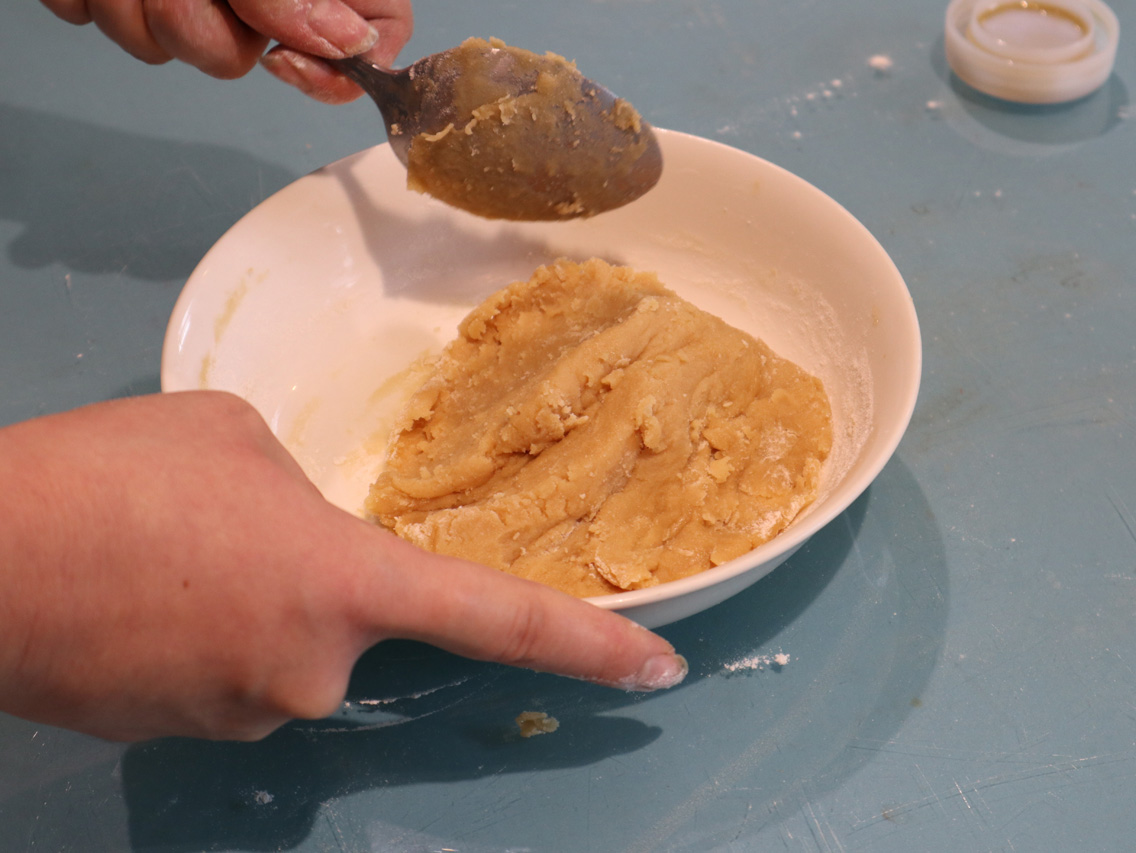



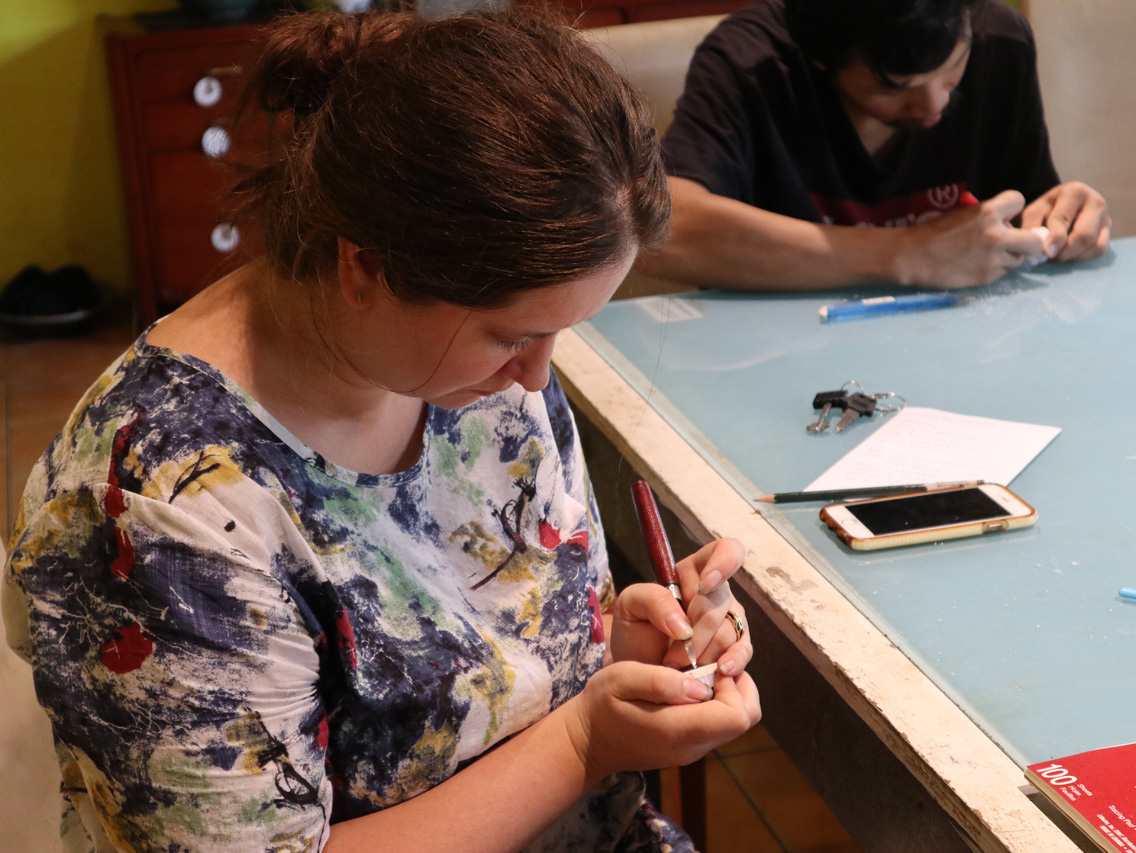


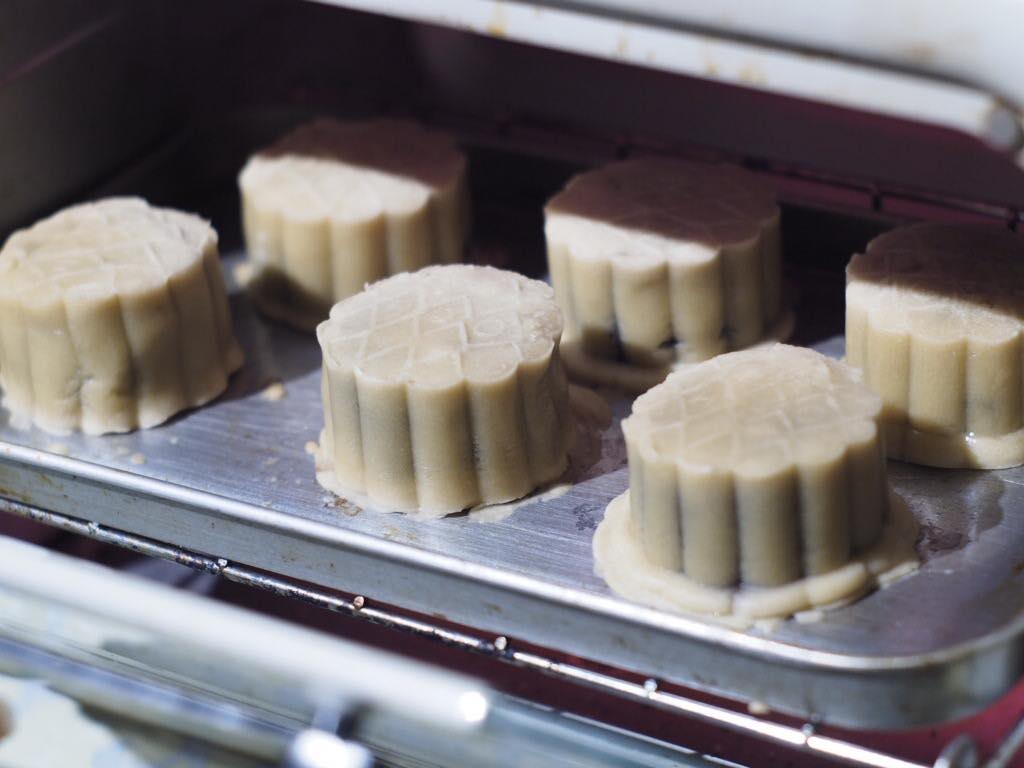


Presentations / Workshops and other events during our residency:
- Presentation of our work at Taipei Annual, Taipei Expo. 7th Sept. https://avat-art.org/taiwanannual2019
- Attendance at seminar “In Art We Care: Eco-Sustainable Action”, Taipei Artist Village. 24th Sept. http://bambooculture.com/en/civicrm/event/info?reset=1&id=151 Speakers Margaret Shui Founder of BCS and Wu Mali, artist (an overview of the eco-art actions carried out by BCS in the past), Marie le Sourd, Secretary General of On The Move Network and Zhou Ganoderma ; Eco Artist / Researcher. The workshop session covered; creating new relationships with water, ways of responding to ecological difficulties within the cultural environment and the challenges and value of international networks for ecological art and action.
- Cultural / Environmental Action: Hiking the Plum Tree Creek, testing water quality and demonstration of casting technique to community gathering. 29th Sept. http://bambooculture.com/en/civicrm/event/info?reset=1&id=152
- Attending Fridays for Future Climate Action, Taipei. 27th Sept. Speaking about Scotland’s response to Climate Emergency.
- Presentation of work at Keelung Ciao 5th October. https://en.keelungciao2019.com.tw
- Running Museum of the FutureNow workshop at Keelung Ciao, 12th Oct. https://en.keelungciao2019.com.tw/
- Running ‘Presence’ organizational development workshop for BCS staff, 17th Oct
- Surviving Typhoon Mitag 1st October!
- Exhibition of work at Open Studio Days 25th/26th Oct. http://bambooculture.com/en/civicrm/event/info?reset=1&id=159
The Walking of Here to There – A Night Walk by Robbie Coleman
Preparation for the walk began by overlaying a section of the Southern Upland Way onto a street map of the city of Taipei – I decided on the section of the route that is nearest to my home in Dumfries and Galloway. Traditional walking routes usually follow ancient walkways between destinations and largely follow the lines of least resistance (waterways, lower gradients, animal tracks, droving roads). Overlaying this flowing journey across an artificially constructed terrain like a modern city would mean a real-time restructuring of the original route, taking the walker into unexpected places and situations. The walk was conducted overnight to avoid the heat and traffic.
My initial thoughts were that I would be considering the cultural colonization by early European explorers, maybe experimenting with re-naming places that I pass through, and exploring the implications of this type of cultural appropriation in a country with its own very real issues of identity and territory as I walked. This seemed especially relevant when we were told that many of the street and place names in Taiwan are transplanted from China by the waves of immigration from the mainland. Streets names that translate as ‘ Shanghai Way’ don’t mean anything, as they are not the way to Shanghai and so on.
In reality, the walk turned out to be much more about terrain and the feel of it. I started at midnight at one end of the Red Metro line. This is in a very modern part of the city containing the 101 Building, until recently the highest building in the world and I continued walking through ancient night markets, peaceful suburbs and empty multilane highways.
Taipei is an unusual city in terms of lighting, apart from the very central part, which resembles any other modern city – overlit and overbearing, most of the city is underlit. I have become used to tall office blocks and blocks of flats being lit up at night in some way, either by leaving all the internal lights on at night in the case of office blocks or floodlit as part of an architectural plan or light spillage from another source, but Taipei feels quite dark. Street level is illuminated by all manners of different lighting – neon – riotous LED signage and street lighting, but this lighting does not reach up very high and so when you look above this vibrant layer, the buildings above it are dark. This gives a sense that you are walking along canyons or amongst steep hills at night. Sometimes the buildings are felt rather than seen, like walking beneath cliffs at night. The buildings exist as volume/bulk rather than as surface.This made the journey into something unexpected and very beautiful. Although there was plenty of activity at periods during the night, the overall sense is one of calm. Taipei is a pretty flat city so there is not sense of altitudes or the difficulty of the climb that marks out any walking route in northern Britain
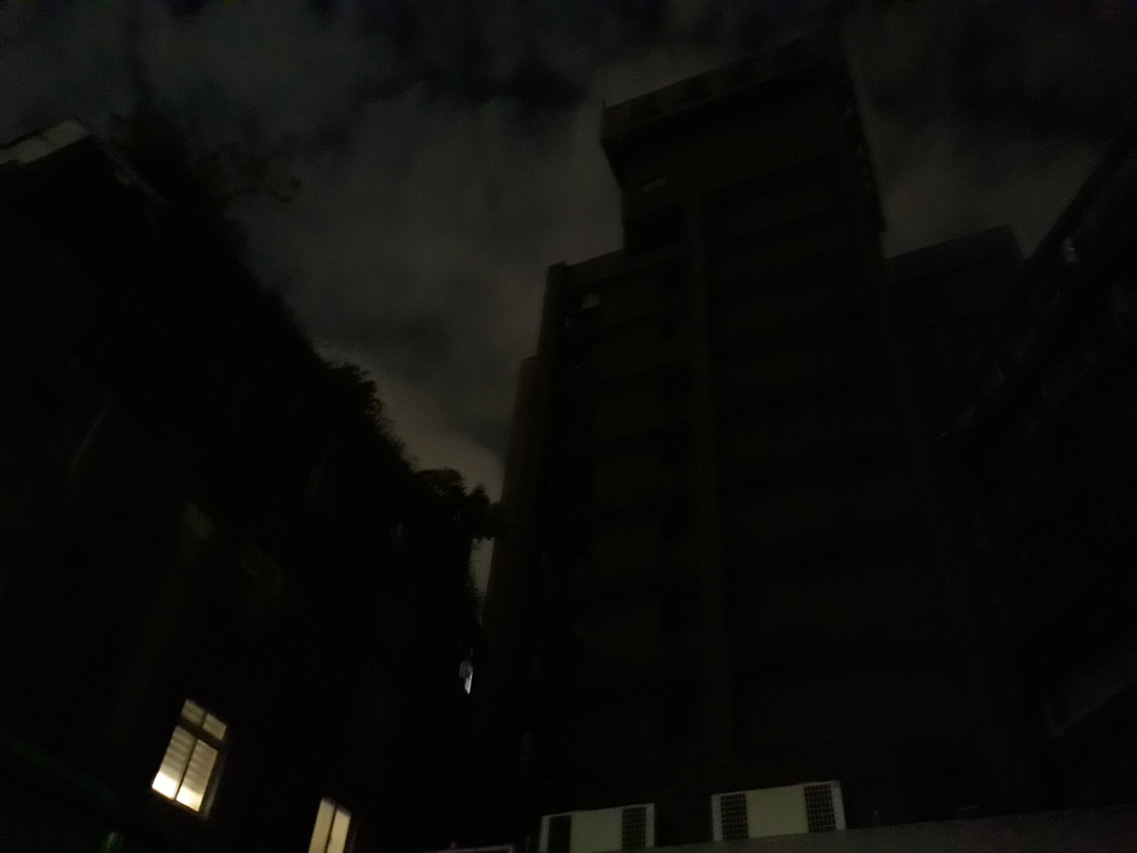
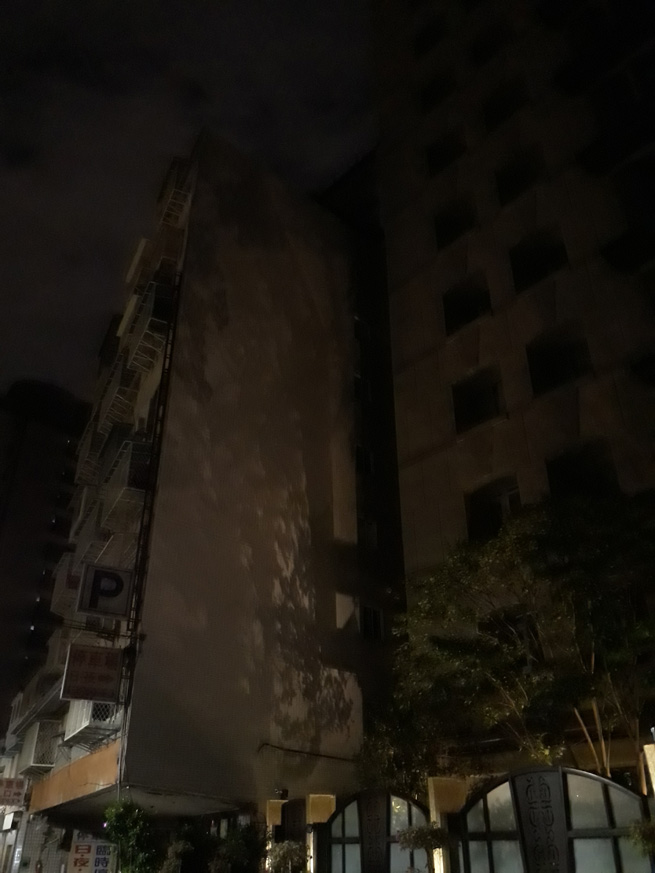

I particularly enjoyed watching the huge high-density housing blocks come to life in the early morning – isolated lit windows appearing in the sheer black walls of the blocks. The architecture changing from something bleak and monolithic to something built of tiny domestic details. Because of the lack of ambient light it was possible to look deep into these living spaces, the vast blocks revealing layers of intimacy.
The duality of the walk also played out in unexpected ways – I had toyed with marking significant points from the Southern Upland Way onto my city map – to try and sew the two walks together in some way, but it proved to be unnecessary – taking a deliberate but nonsensical route across the city became a strange map reading exercise, the route bore no intuitive relationship to the terrain to be walked through so the map had to be continuously consulted – long curved corners and backtracking due to obstacles many thousands of miles away became a particular pleasure and as did the way the immediate real obstacles in the city forced the flowing Southern Upland Way into a ungainly series of angles and steps.
I also became an avid night time photographer, revelling in the limits of the camera in my phone. The sometimes impressionistic results corresponding to how the terrain felt as well as how it looked.
The walk gave me time to consider what would happen if I remapped the city adjusted map back onto the Southern Upland route, changing it into a stepped and clumsy pathway through the rolling landscape – which would lead to new obstacles to work around and remap, which in turn might lead to another remapping onto another city – the ancient walkway becoming a palimpsest, constantly rewritten for new terrain, each iteration becoming part of a multiple memory of place through a single pathway. These circular thought patterns were helped along by my decision to chew Betel Nuts (local stimulant beloved of truck and taxi drivers in Taiwan) on my journey – this gave the whole walk a sense of uplift and wellbeing as well as an excess of saliva.
I arrived back at the studios at 6.00 in the morning with a fabulous sense of achievement, a phone-full of very blurred photographs and dyed red teeth.

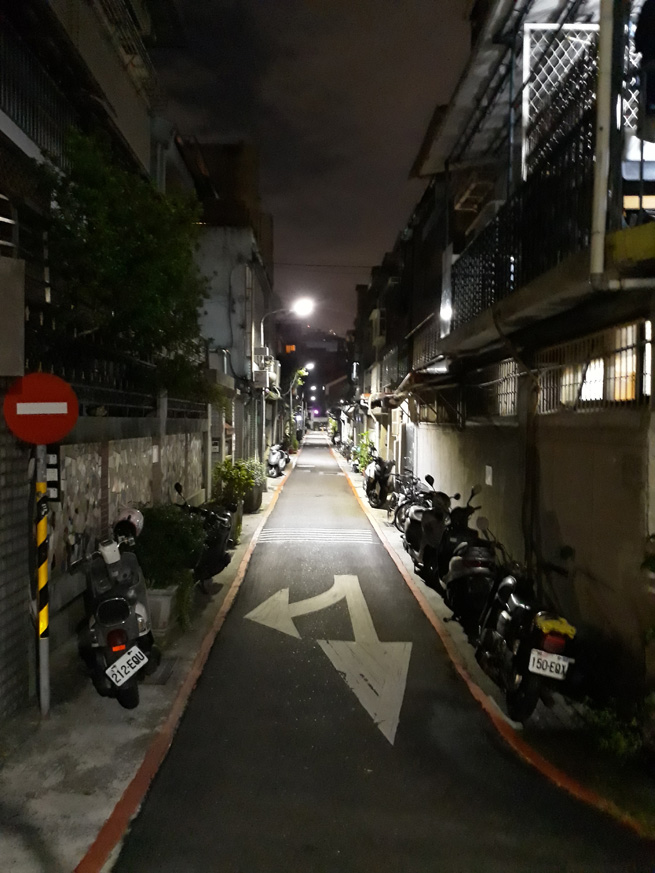

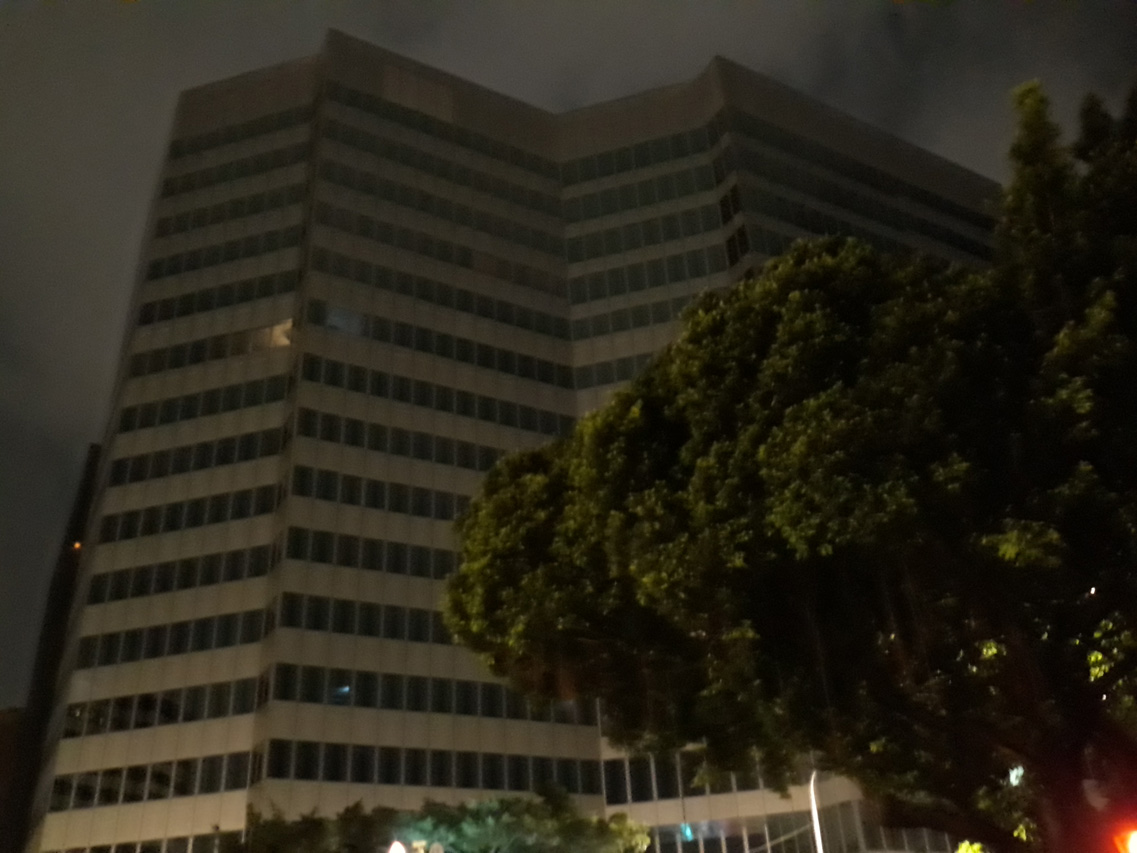



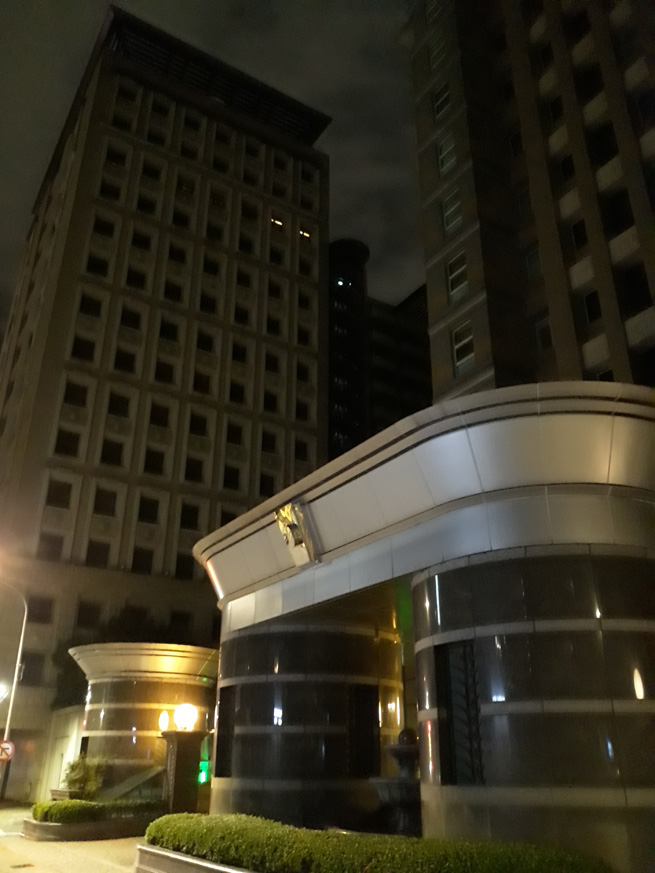

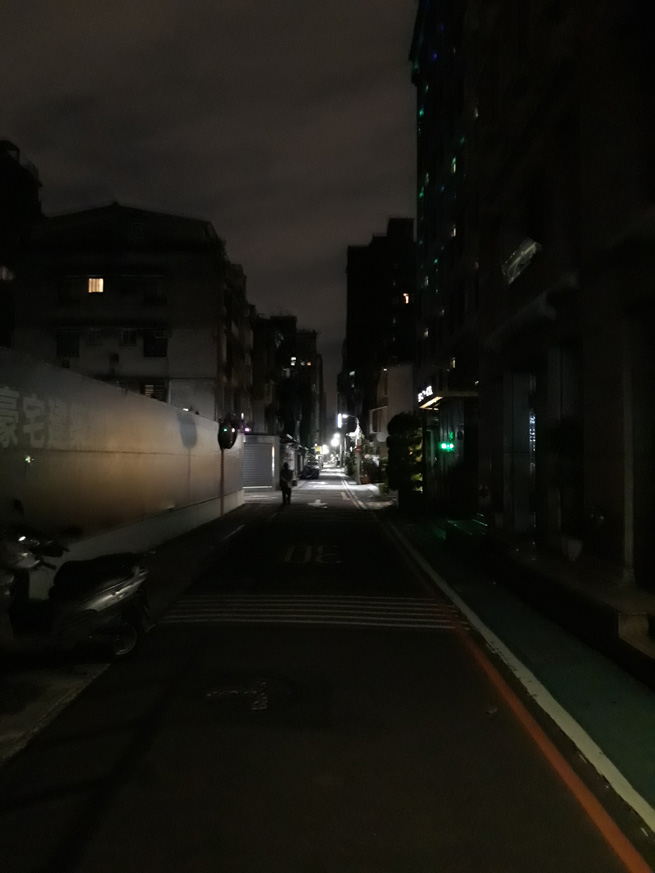








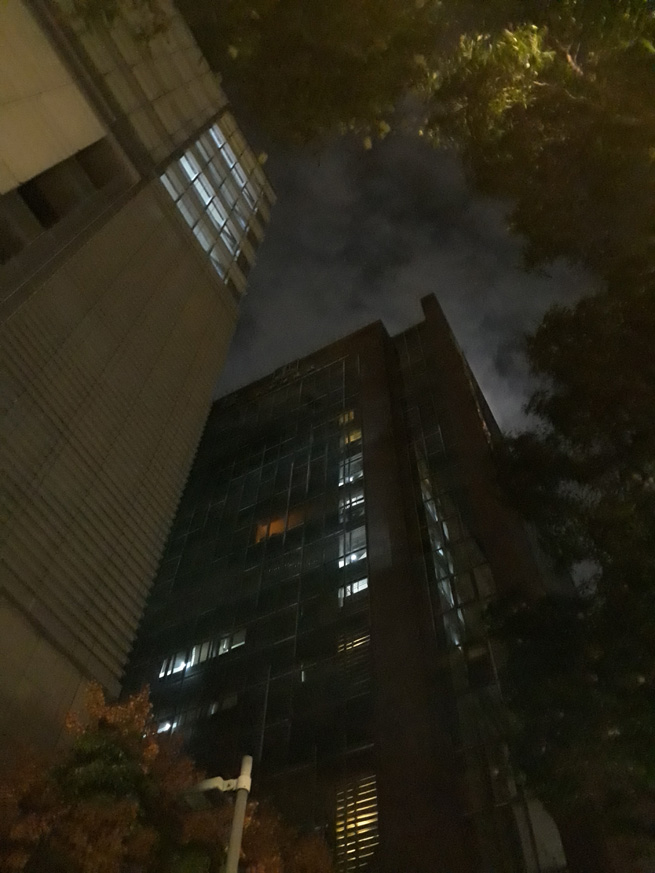


We are grateful for the support of DGU and Dumfries and Galloway Council.


We are also grateful to Artists Information Company for providing a bursary that enabled us to undertake the residency in order to facilitate wider conversations with artists and organisations about art and social and environmental action.
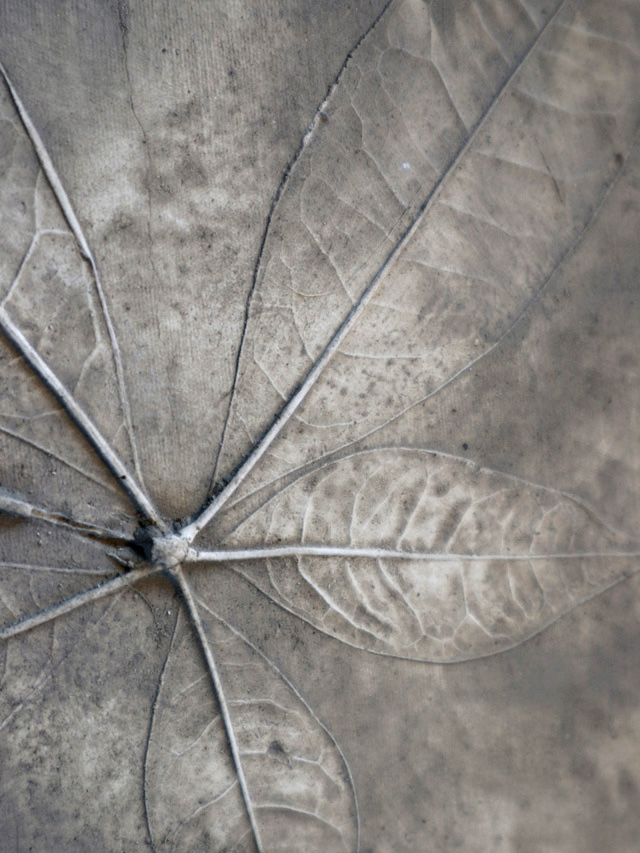
Categories: 2019, Community Engagement, Environmental, Exhibition, Interactive, Participatory, Process, Research, Site Specific, Strategy









